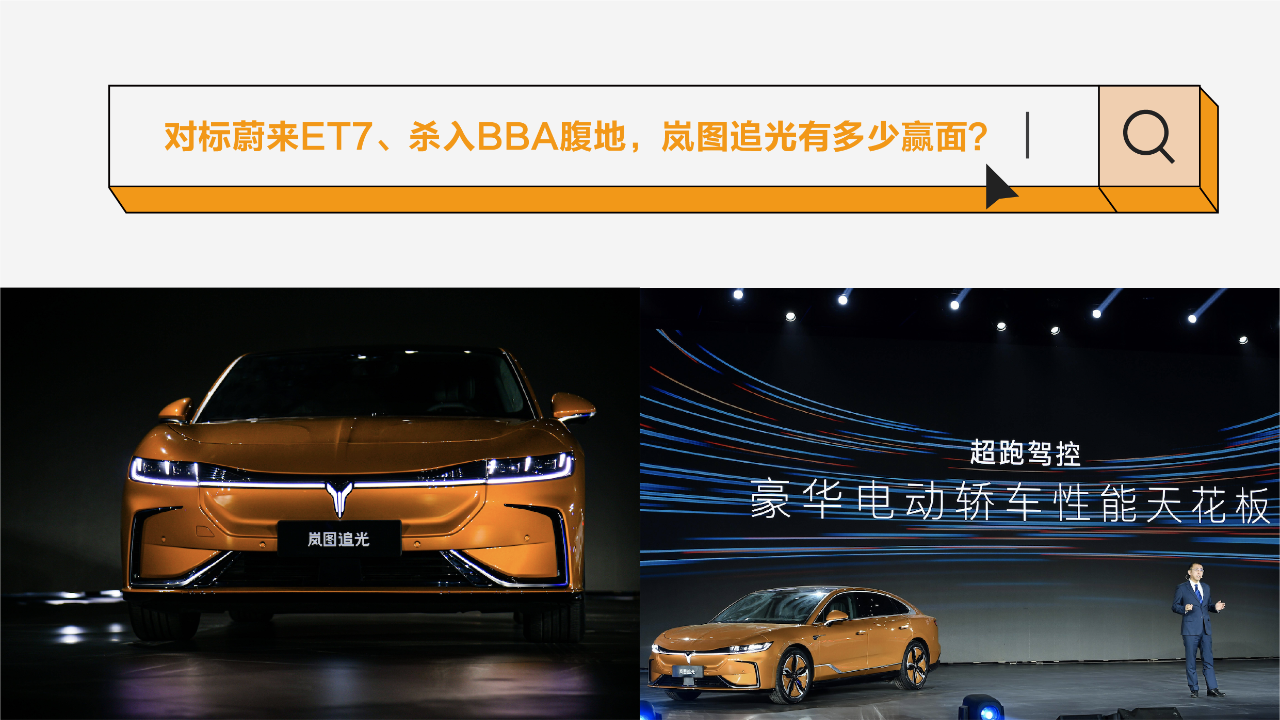Author: Zheng Senhong
On December 15th, the first pure electric sedan from Voyah, named Zhui Guang, officially began pre-orders and will be launched and delivered in the first half of 2023.
- 82kW·h 580km Standard Edition: The pre-sale price of the entire vehicle is 322,900 yuan, 192,900 yuan after battery leasing, and the monthly battery rental fee is 1,680 yuan.
- 82kW·h 580km Flagship Edition: The pre-sale price of the entire vehicle is 352,900 yuan, 222,900 yuan after battery leasing, and the monthly battery rental fee is 1,680 yuan.
- 109kW·h 730km Long Endurance Flagship Edition: The pre-sale price of the entire vehicle is 432,900 yuan, 252,900 yuan after battery leasing, and the monthly battery rental fee is 2,250 yuan.
From the pricing and battery leasing plans, it is clear that Zhui Guang is undoubtedly a high-volume model from Voyah.
In addition to the price, Voyah has also learned two methods that are most popular with users in the industry: fully-loaded configuration and offering benefits:
- Standard configuration includes same-level exclusive AR-HUD, maximum panoramic sunroof of the same level, and fully heated, ventilated and massaging seats throughout the vehicle.
- The Voyah Dreamer Low-Carbon Edition fast charging worth 9,999 yuan is free for users.
In the eyes of Voyah CEO Lu Fang, Zhui Guang represents Voyah’s latest achievements in independent research and development in the past three years and “is a model that pursues all-around excellence.”
Overall, Zhui Guang’s market performance will determine the future direction of Voyah.
What is the new standard for luxury electric sedans?
As a medium to large luxury pure electric sedan, the launch of Zhui Guang means that Voyah has completed the “Three Years, Three Categories” product layout.
According to Lu Fang, Zhui Guang focuses on performance and luxury, and its goal is to re-establish the new standard for medium to large luxury electric sedans.
To master the entire chain of independent research and development and manufacturing, Voyah has chosen a full-stack self-research and development road, completing the technical layout of the new energy vehicle platform, three-electricity, and electronic and electrical systems. This is the confidence behind Lu Fang’s “Voyah Zhui Guang 300,000 + no opponent” statement.
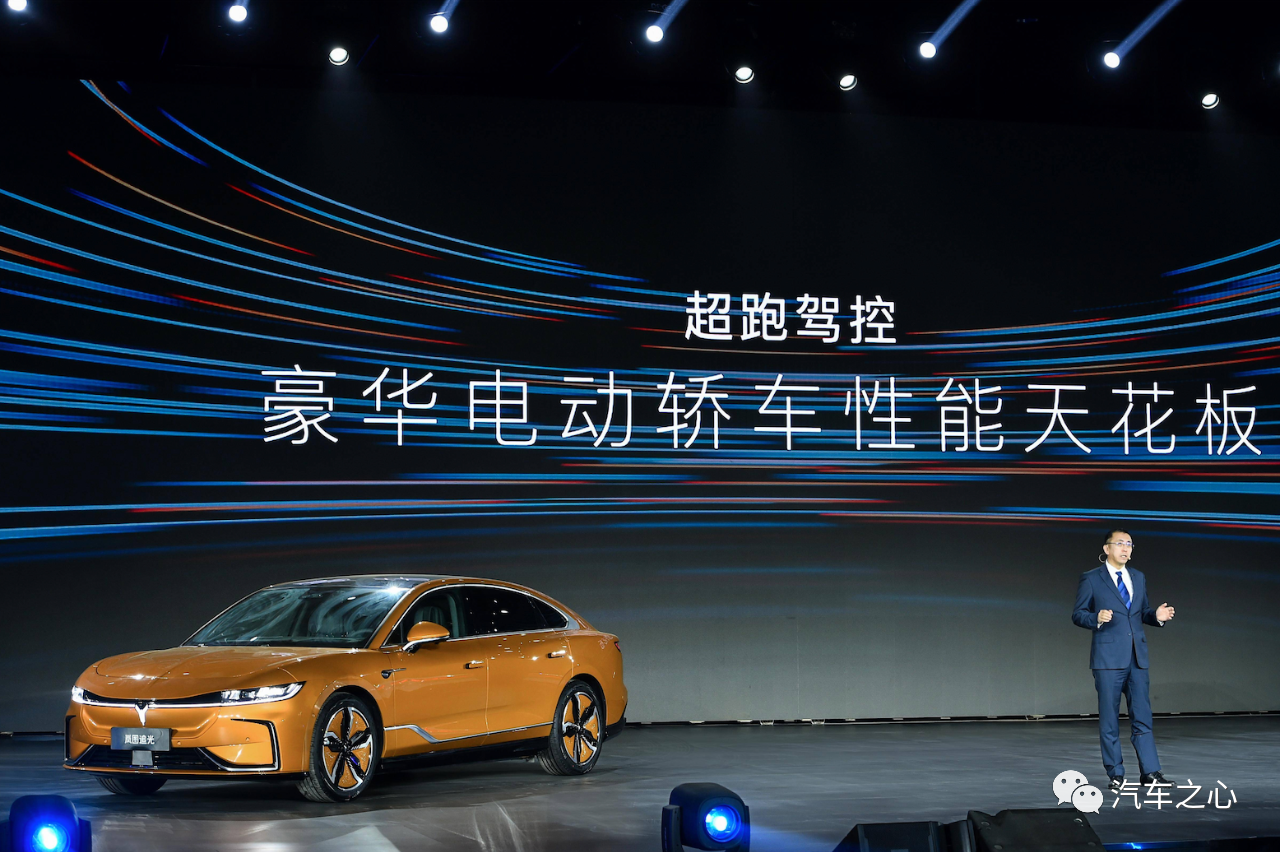
On the power side, Zui Guang has developed an 8-layer flat wire drive motor that can release a maximum power of 375kW and peak torque of 730N·m. It has a zero-to-100km/h acceleration time of 3.8 seconds and a top speed of 210 km/h.
Compared to the power parameters of traditional luxury car manufacturer BBA’s “56E”, which can be considered a sales benchmark for administrative-level luxury cars, the shortcomings of its 2.0T engine that can be purchased for RMB 400,000 are obvious.
Just taking the example of a top speed of 210 km/h, what level is this?
For comparison, the top speeds of Porsche Taycan, BMW iX, and NIO ET7 are 220Km/h, 200Km/h, and 200Km/h, respectively, confirming that the in-house-developed electric drive of Zui Guang is definitely above the average.

At the same time, Zui Guang’s excellent performance is also reflected in its turning and accident avoidance abilities.
By way of comparison, Zui Guang achieves a maximum lateral acceleration of 1.0G, while Porsche 718 and Ferrari 458 achieve 0.9G and 1.0G, respectively. If we consider G-forces alone, Zui Guang’s cornering ability on the track might be competitive with that of a Ferrari supercar.
In past elk testing, Zui Guang achieved a score of 83 km/h, while the current optimal scores are 80 km/h for Porsche 911 and NIO ET7 combined.
In addition to emphasizing its performance attributes, this time Zui Guang has also taken a step up in terms of intelligence.
On the intelligent driving side, Zui Guang is equipped with 31 sensors:
- 12 cameras
- 5 millimeter-wave radars
- 12 ultrasonic radars
- 2 high-precision positioning units“`
Based on this perception hardware, Zhui Guang has brought its self-developed high-speed autonomous navigation driving system, which is claimed to have more than 140 patents and supports 30 intelligent driving functions covering high-speed, urban expressway and point-to-point navigation assistance.
As for the underlying chip of this intelligent driving system, Zhui Guang did not introduce it publicly this time, but Zhui Guang had appeared on the first intention car enterprise list of Horizon Journey 5, but it is not clear whether it will be applied to Zhui Guang.
“Zhui Guang will gradually realize the fully-scenario automatic driving function in the future”, which is a “easter egg” released by Lu Fang at the press conference in advance about the direction of intelligent driving, indicating that Zhui Guang has officially joined the self-developed intelligent driving race.
On the intelligent cockpit level, different from the two models of Zhui Guang FREE and Dream Home, Zhui Guang is equipped with its self-developed central integrated SOA electronic and electrical architecture, which integrates four major functional domains of vehicle control, power, intelligent driving and cabin, basically encompassing the main functions of the whole vehicle.
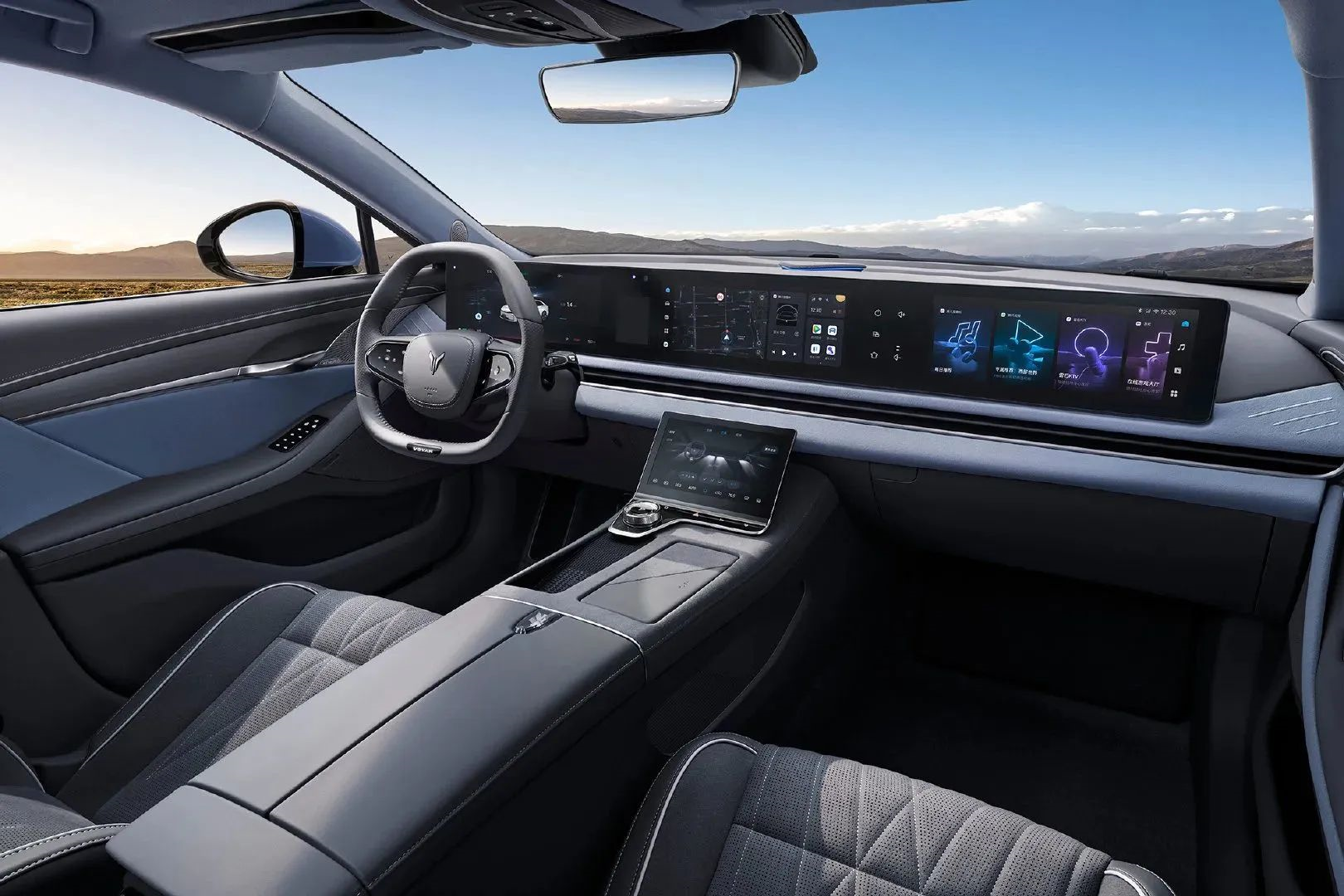
In order to more intuitively show the integration degree of Zhui Guang’s SOA electronic architecture, Lu Fang gave a vivid example – World Cup Mode.
When the user enters the cabin, the World Cup mode will be automatically turned on: the car seat will automatically switch to VIP viewing mode, the fragrances can be turned on simultaneously, and the air conditioner will also be adjusted to the most suitable temperature for watching the game; the ambient lights will turn into the color of the user’s favorite team, the music will also synchronize to play the theme song of the World Cup, and finally, the related video App will start playing the game screen.
This is a typical case of “baton” mobilizing the whole vehicle system.
It is reported that Zhui Guang’s central centralized architecture is the only intelligent architecture that currently uses central integrated hardware.
It can be seen that the ESSA native pure electric intelligent architecture and the central centralized SOA electronic and electrical architecture are like the “skeleton” and “soul” of Zhui Guang, empowering Zhui Guang’s ability in driving, intelligence and luxury.
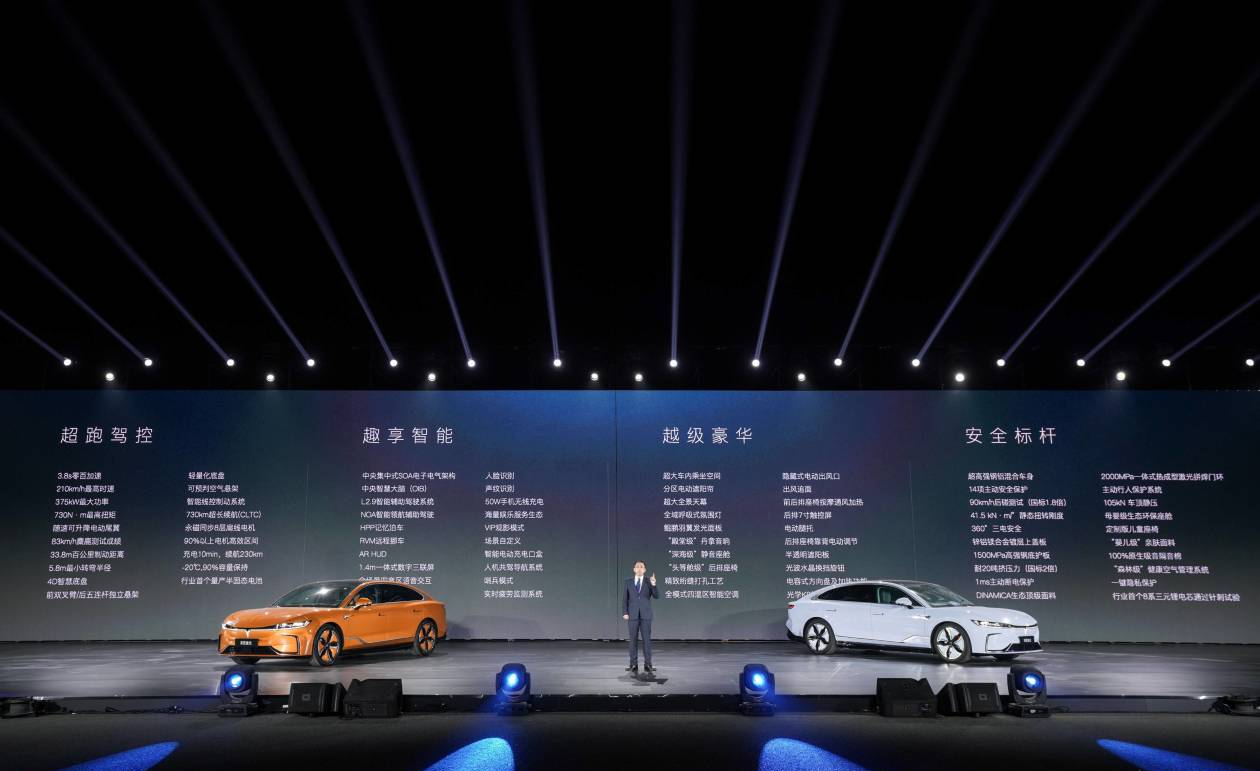
“`Every car manufacturer has its own definition of luxury.
BYD emphasizes that “safety is the greatest luxury”, while Voyah focuses on “luxury is about being visible and enjoyable”, including the largest ride space at the same level of 1940mm, Bentley-style ultra-fine velvet and DINAMICA ecological suede, Dynaudio 14 speaker system, and so on.
In short, Voyah’s pursuit of excellence is like a “catfish” in the 400,000-yuan luxury car market, which is not only strong in terms of performance but also “strong” in terms of comfortable driving, performance control, and intelligent experience. It also excels in the areas of performance, luxury, and intelligence.
Getting rid of sales anxiety, “cost-effectiveness” is the only way out
For a long time, the mid-to-large-size sedan market has been the real market for the three traditional luxury brands BBA: BMW 5 Series, Audi A6L, and Mercedes-Benz E-Class.
According to data from the China Association of Automobile Manufacturers, the cumulative sales of BMW 5 Series, Audi A6L, and Mercedes-Benz E-Class in the first 11 months of 2022 were 159,800 units, 134,100 units, and 107,200 units, respectively. Together, they occupy 75% of the 400,000-yuan luxury sedan market share.
Taking advantage of the electric power and intelligence, whether it’s a new force in carmaking or a traditional brand, everyone seems to have a consensus: to make electric cars high-end.
Smart electric cars with a starting price of 300,000 to 400,000 yuan are springing up on the market like mushrooms.
In addition to the pure electric power system that is different from traditional oil-powered cars, new forces have successfully captured the minds of domestic consumers through intelligence, user-friendly design, and user experience: “Domestic cars can also sell for more than 300,000 yuan.”
According to data, the penetration rate of new energy luxury cars in November this year hit a new high of 32.1%, while the penetration rate of new energy of mainstream joint venture brands was only 5.2%.
This also indicates that at the current stage, independent brands are more competitive in the market for new energy luxury car models than traditional luxury brands.
According to data released by the China Association of Automobile Manufacturers in November, the price range of over 300,000 yuan is not the mainstream market, and its market space is relatively limited, accounting for only 5.5% of the overall market, which means that the maximum capacity of the market is between 1.1 million to 1.2 million units. However, for the current market stock of less than 200,000 units of pure electric sedans priced over 300,000 yuan, there is obviously a huge room for growth.“`
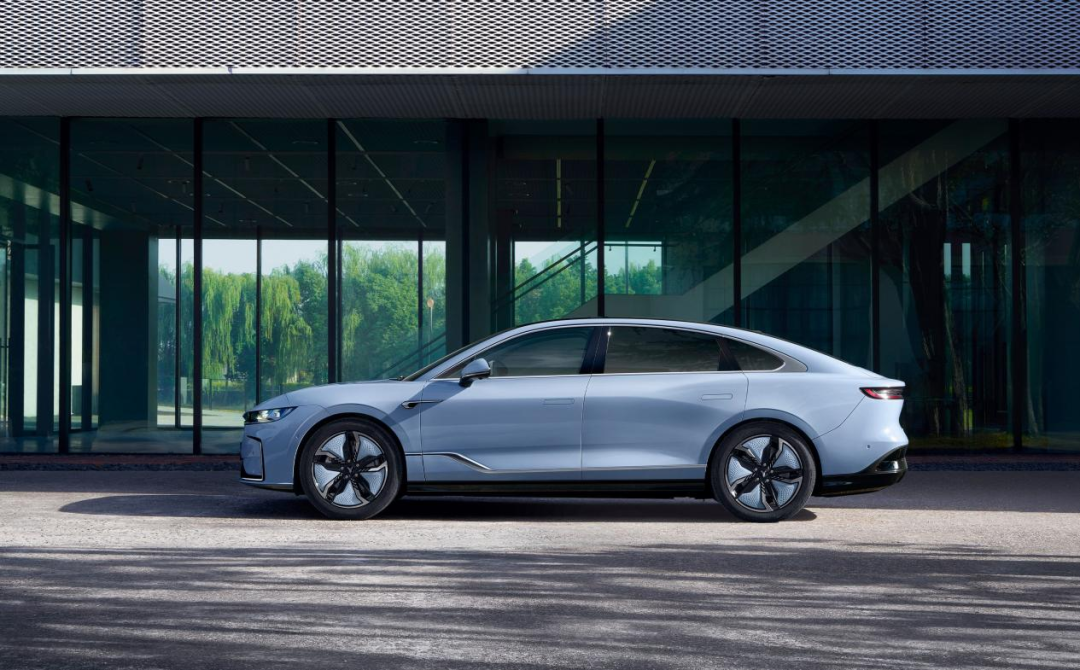
This is exactly the core reason for the technology of Voyah Chasing Light.
Considering the pre-sale price, it is not an exaggeration to describe Chasing Light’s positioning as “attacking from both sides”. On the one hand, there is the IM L7, which focuses on handling and sportiness, and on the other hand, there is the NIO ET7, which emphasizes luxury design.
Moreover, in the 300,000+ pure electric sedan market, there are also popular models like the KEE 001 and the upcoming or already popular NIO ET5, making it difficult for Chasing Light to compete for users with these brands.
In response, Voyah believes that Chasing Light’s opportunity lies in “cost-effectiveness”.
According to You Zheng, Chairman of Voyah Automotive:
“In the 300,000+ electric sedan market, IM L7 can be seen as a direct competitor to Voyah Chasing Light. Both cars are equivalent in terms of power and autonomous driving assistance features, but in terms of connectivity scenarios, Chasing Light is more practical. Furthermore, the interior of the L7 is full of plastic and does not convey a sense of luxury, whereas the 400,000+ NIO ET7 is directly targeted by Chasing Light’s price advantage.”

It can be seen that Voyah has created a “cost-effectiveness” market advantage for Chasing Light through one-click configuration and high-to-low pricing.
From a product perspective, Chasing Light is indeed a product that can compete with new and old luxury cars such as the Audi A6L and the NIO ET7. However, when it comes to user attention and marketing systems and other areas, Voyah undoubtedly lags behind new players in the car industry such as NIO, WM Motor, and KEE.
In fact, this can be seen from the market feedback after the release conference. Although the pre-sale price was reduced to the price range of BYD Han and XPeng P7 through battery leasing, there are still no signs of a “popular” market.
In addition to its pure electric version, Chasing Light actually holds a “hybrid” trump card, which may become the only high-end extended-range sedan available on the market.
“““
Regardless of the circumstances, promoting sales growth has become the core task of Chasing Light, and failure is not an option.
The battle for Voyah has just begun
Toward the end of 2022, the competition in China’s new energy vehicle market has become increasingly fierce.
On the one hand, the sales rankings of the new forces in car-making are constantly changing, with NIO Es8 and Leapmotor overtaking the top contenders such as LiXiang and WM Motor; on the other hand, traditional car-makers represented by BYD and GAC have taken the lead in achieving annual KPI.
For all car-makers who are entering the competition, the industry is rapidly moving forward and sharply divided. Falling behind once would make it difficult to catch up again.
Official data shows that Voyah’s cumulative sales from 2022 to present are 17,384 units.
If according to the sales target of 46,000 units set at the beginning of the year, only 37.8% of the annual target has been achieved so far. If based on the sales target of 31,000 units adjusted in the middle of the year, the current progress is 56.1% towards the annual target.
By comparison, Jinkelaunch K-One, which started delivery in October 2021, had already achieved its annual delivery target of 70,000 units by mid-December 2022.
Objectively speaking, Voyah’s sales data is not satisfactory.
However, considering the average price of Voyah’s first model being RMB 334,000, and the second model being priced between RMB 360,000 and 690,000, it is obvious that Voyah is not designed for high volume, but rather trying to occupy the high-end luxury vehicle market.
“The average price per car of Voyah brand has exceeded RMB 382,000,” this is the latest data released by Lu Fang.
This data shows that Voyah has crossed the threshold of “Dongfeng’s high-end brand”.
And now, Voyah still needs a product that can truly open up the market and boost sales in order to achieve self-reliance.
The data shows:
- Voyah suffered a net loss of RMB 703 million throughout 2021 and a net loss of RMB 738 million in the first half of 2022.
- In the first half of this year, Voyah’s total assets were RMB 7.412 billion, total liabilities were RMB 6.529 billion. The asset-liability ratio was as high as 88%.
```markdown
Looking at the comparison horizontally, both new car manufacturers and traditional new energy brands will suffer losses. Compared with "Weltmeister", the loss of "Voyah" is not very high, but the market size cannot be ignored. At present, Aion, Jinkr, NIO, AITO, Voyah, and Ideal all sell more than 10,000 vehicles per month.
As for technical capabilities, ESSA pure electric architecture platform is the biggest trump card in Voyah's hands.
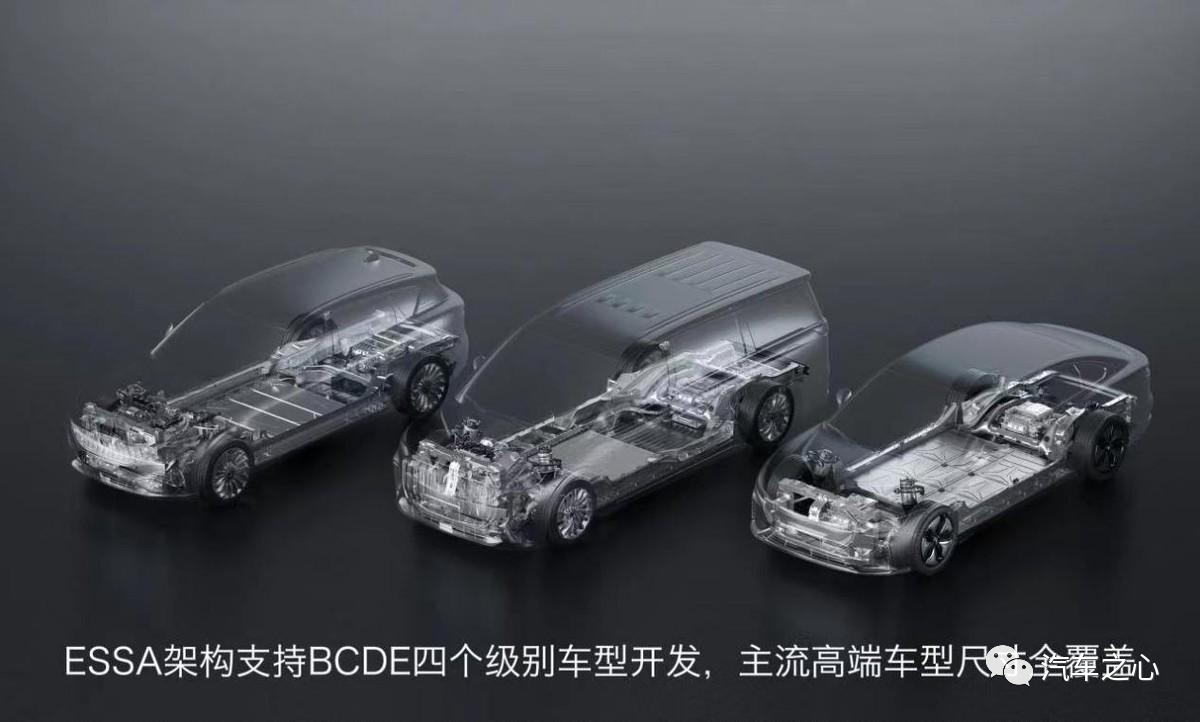
According to Lu Fang's statement, the ESSA pure electric platform is an open architecture, which can be compatible with pure electric, extended range electric, and intelligent multi-mode and multi-power solutions. It also has high scalability, and can cover the development of various vehicle models such as sedans, SUVs, MPVs, and cross-overs. The commonality rate of components for building vehicle models on the same architecture reaches 85%.
At Voyah Technology Day, Voyah defined this platform as "able to meet Voyah's technology needs for the next 8-10 years."
Lu Fang revealed that compared with 2021, Voyah's core R&D personnel have increased by 73%, and currently R&D personnel account for 38% of the total number of employees, claiming to have reached the "highest proportion of new carmakers".
With the debut of the third model, Voyah has collected its latest technological achievements. However, whether Voyah can depict the future "blueprint" still depends on product capabilities and market sales.
This article is a translation by ChatGPT of a Chinese report from 42HOW. If you have any questions about it, please email bd@42how.com.
